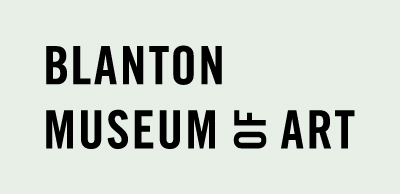Maxime Lalanne (1827-1886)
Saturday, October 18, 2008 - Sunday, March 8, 2009
Maxime Lalanne is counted among the artists most responsible for the revival of etching in the mid 1800s in France. At the age of twenty-one, in 1848 -- a year when social unrest was exploding across Europe into peasant revolts and political revolution -- Lalanne left his native Bordeaux for Paris. He first exhibited at the Salon of 1852 with landscape drawings noted for their lyricism and charm. It wasn't until 1862 that he made his first etching (Rue des Marmousets), recognized by critics and fellow artists as a tour de force of the medium. He was a founding member of the Société des Aquafortistes [Society of Etchers], and his treatise on etching first published in 1866 launched the
renaissance of this printmaking process. Although he excelled at making romantic landscapes inspired by seventeenth-century masters Claude Lorrain and Rembrandt, he is best known for his urban views critical of Napoleon III's rebuilding of the capital that displaced the working classes. Both his step-by step technical instructions of his treatise and his poignant etchings of the city and countryside in transition remain relevant commentaries on art and society in our own century.
Throughout the exhibition, excerpts from Lalanne's influential treatise are paired with his etchings to help the visitor appreciate the artist's achievements, both visual and literary. Quotes are taken from the translation and reprinting of 1981.
Lalanne began with a definition of an etching:
"An etching is a design fixed on metal by the action of an acid. The art of etching consists, in the first place, in drawing, with a point or needle, upon a metal plate, which is perfectly polished, and covered with a layer of varnish, or ground, blackened by smoke; and secondly, in exposing the plate, when the drawing is finished, to the action of nitric acid. The acid eats into the lines which have been laid bare by the needle, and the drawing is bitten in. The varnish is then removed by washing the plate with spirits of turpentine, and the design will be found to be engraved, as it were, on the plate."
renaissance of this printmaking process. Although he excelled at making romantic landscapes inspired by seventeenth-century masters Claude Lorrain and Rembrandt, he is best known for his urban views critical of Napoleon III's rebuilding of the capital that displaced the working classes. Both his step-by step technical instructions of his treatise and his poignant etchings of the city and countryside in transition remain relevant commentaries on art and society in our own century.
Throughout the exhibition, excerpts from Lalanne's influential treatise are paired with his etchings to help the visitor appreciate the artist's achievements, both visual and literary. Quotes are taken from the translation and reprinting of 1981.
Lalanne began with a definition of an etching:
"An etching is a design fixed on metal by the action of an acid. The art of etching consists, in the first place, in drawing, with a point or needle, upon a metal plate, which is perfectly polished, and covered with a layer of varnish, or ground, blackened by smoke; and secondly, in exposing the plate, when the drawing is finished, to the action of nitric acid. The acid eats into the lines which have been laid bare by the needle, and the drawing is bitten in. The varnish is then removed by washing the plate with spirits of turpentine, and the design will be found to be engraved, as it were, on the plate."

